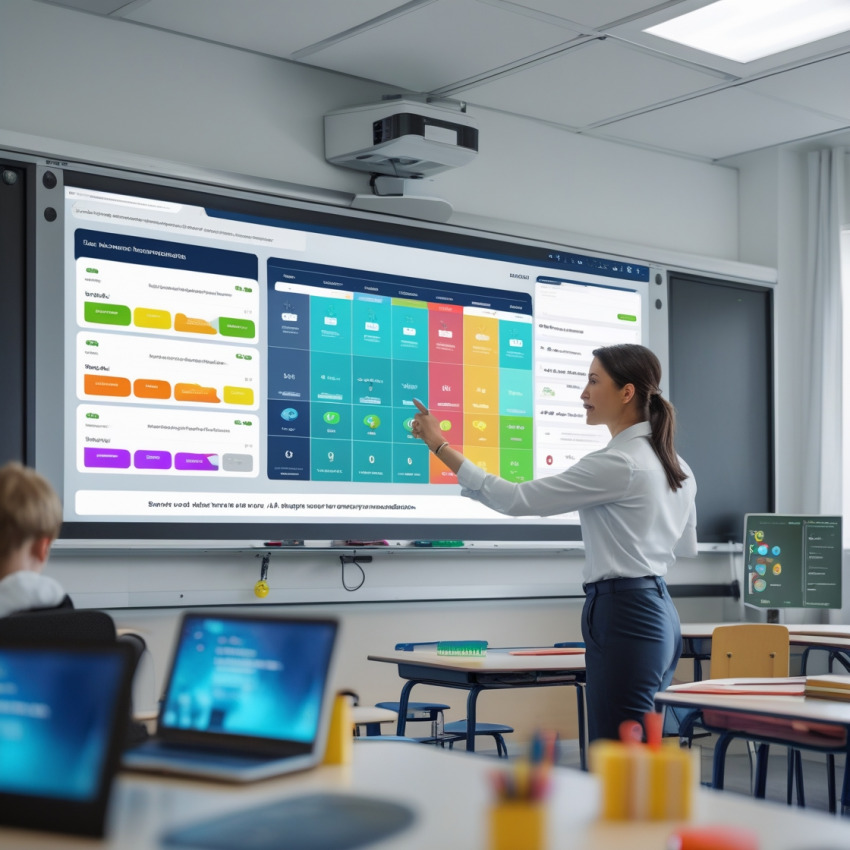From Digital Dream to Educational Reality: How AI is Revolutionizing Personalized Learning
From Digital Dream to Educational Reality: How AI is Revolutionizing Personalized Learning
In today's fast-paced world, traditional one-size-fits-all education is no longer enough. That’s where AI in education steps in, turning a digital dream into educational reality. With the power of artificial intelligence, personalized learning is becoming a tangible and effective tool for students of all ages. This article explores how AI is revolutionizing personalized learning, making it more accessible, efficient, and tailored to individual needs.
What is Personalized Learning?
Personalized learning is an educational approach that adapts to the unique needs, interests, and abilities of each student. Unlike traditional classroom settings, this method allows learners to progress at their own pace, ensuring deeper understanding and better retention.
Key features of personalized learning include:
- Adaptive content delivery
- Customized learning paths
- Real-time feedback
- Data-driven insights
This shift is not just a trend—it’s a transformation driven by AI in education.
How AI is Revolutionizing Personalized Learning
1. Intelligent Tutoring Systems
AI-powered tutoring systems like Squirrel AI and Knewton use machine learning to analyze student performance and adjust content accordingly. These platforms can identify gaps in knowledge and provide targeted support, making learning more efficient.
2. Predictive Analytics
With predictive analytics, AI can forecast student performance based on historical data. This helps educators intervene early, offering additional resources or adjusting teaching methods to support struggling students.
3. Natural Language Processing (NLP)
NLP enables AI to understand and respond to student queries in natural language. Tools like IBM Watson and Google Assistant are now being used in classrooms to answer questions, explain concepts, and even engage in conversations with students.
4. Gamification and Engagement
AI enhances engagement through gamified learning experiences. Platforms like Duolingo and Quizlet use AI to create interactive lessons that keep students motivated and involved.

The Benefits of AI in Personalized Learning
| Benefit | Description |
|---|---|
| Customization | Tailored learning experiences for each student. |
| Efficiency | Faster progress and improved outcomes. |
| Accessibility | Makes quality education available to more people. |
| Data Insights | Helps teachers make informed decisions. |
These benefits highlight why AI in education is not just a digital dream but a real-world solution.
Challenges and Considerations
While AI offers immense potential, it also comes with challenges:
- Data Privacy: Ensuring student data is secure.
- Bias in Algorithms: Avoiding unfair treatment due to biased training data.
- Teacher Roles: Reimagining the role of educators in an AI-driven classroom.
However, with proper implementation and oversight, these challenges can be overcome.
The Future of AI in Education
As technology continues to evolve, so will its impact on education. The future of personalized learning lies in seamless integration with AI, creating a more inclusive and effective learning environment. Institutions like MIT and Stanford are already exploring AI-based education models, signaling a shift toward a smarter, more adaptive system.
5 Wh Questions About AI in Education
❓ What is AI in Education?
AI in education refers to the use of artificial intelligence to enhance the learning experience, personalize content, and support both students and teachers. It includes tools like intelligent tutoring systems, chatbots, and data analysis platforms that adapt to the learner's needs.
❓ How Does AI Help Personalize Learning?
AI analyzes student data to determine strengths, weaknesses, and learning styles. Based on this information, it provides customized content, suggests learning paths, and offers real-time feedback. This ensures that each student receives a tailored educational experience.
❓ Can AI Replace Teachers?
No, AI cannot replace teachers. Instead, it acts as a powerful tool that supports educators by automating administrative tasks, providing insights, and personalizing instruction. Human teachers remain essential for guiding, inspiring, and connecting with students.
❓ Is AI in Education Safe?
Yes, AI in education can be safe if implemented responsibly. It's important to ensure data privacy, avoid algorithmic bias, and maintain transparency. When used ethically, AI can significantly enhance the learning process without compromising security or fairness.
❓ What Are the Long-Term Impacts of AI on Learning?
In the long term, AI will make education more accessible, efficient, and inclusive. It will enable lifelong learning, support diverse learning styles, and help bridge educational gaps. As AI continues to advance, it will play an increasingly vital role in shaping the future of education.
What We’ve Learned
From a digital dream to educational reality, AI is reshaping the way we learn. By enabling personalized learning, it empowers students to reach their full potential. As we move forward, the collaboration between AI and human educators will be key to unlocking the future of education.
Ready to explore more about AI in education?
Have thoughts on how AI is changing education?
Leave your comment below and join the conversation!

